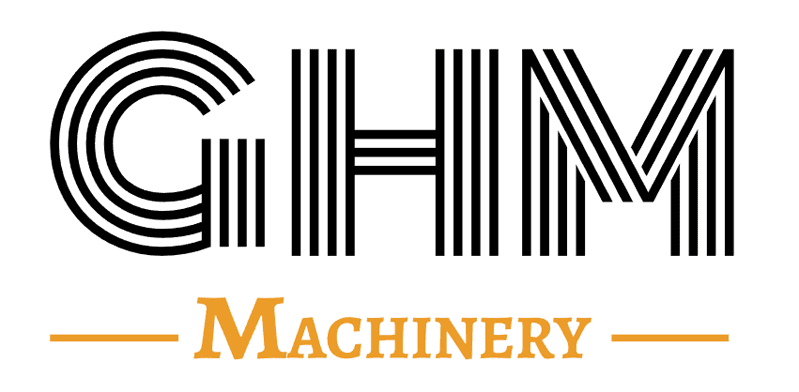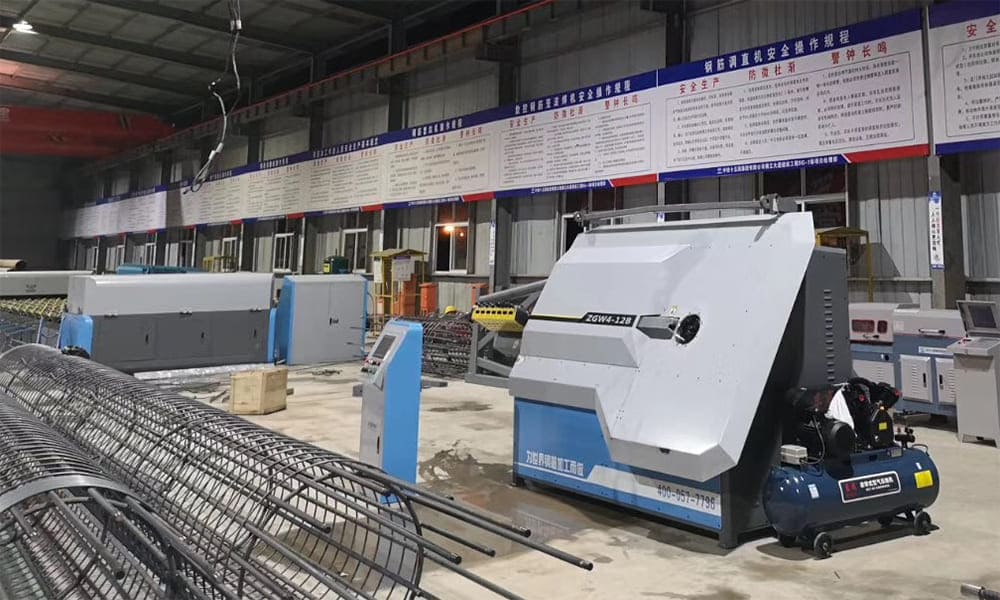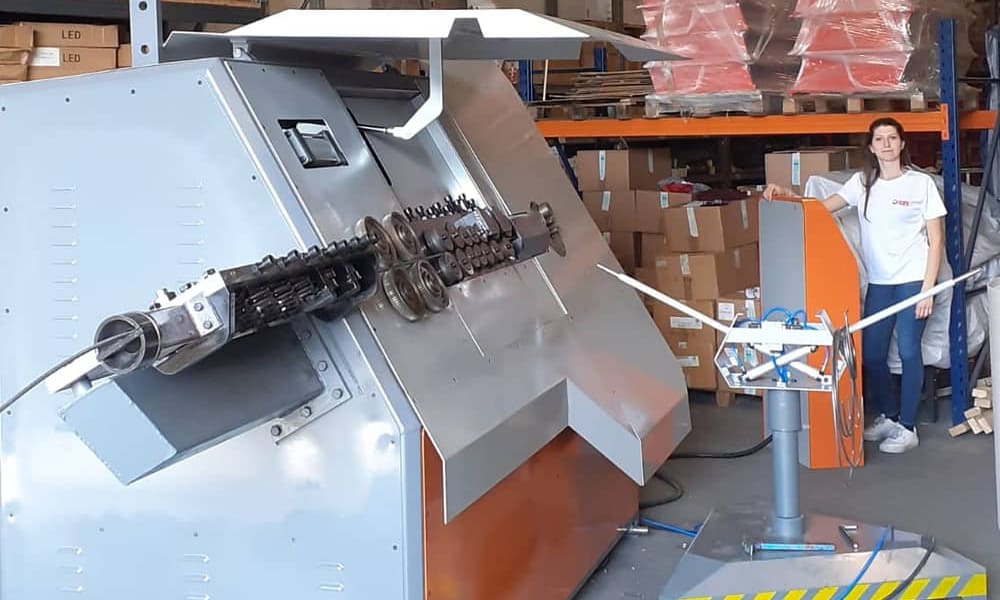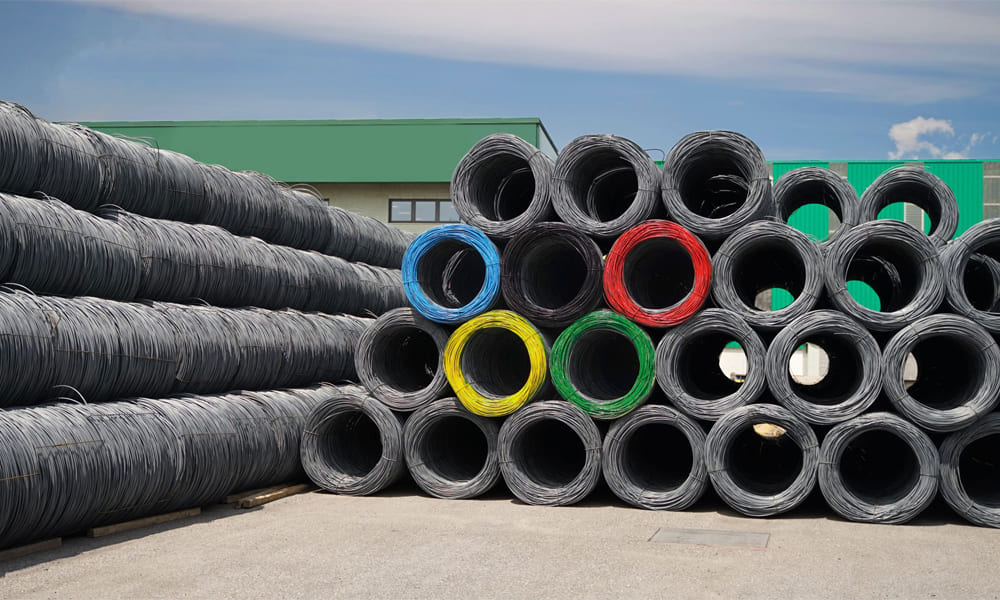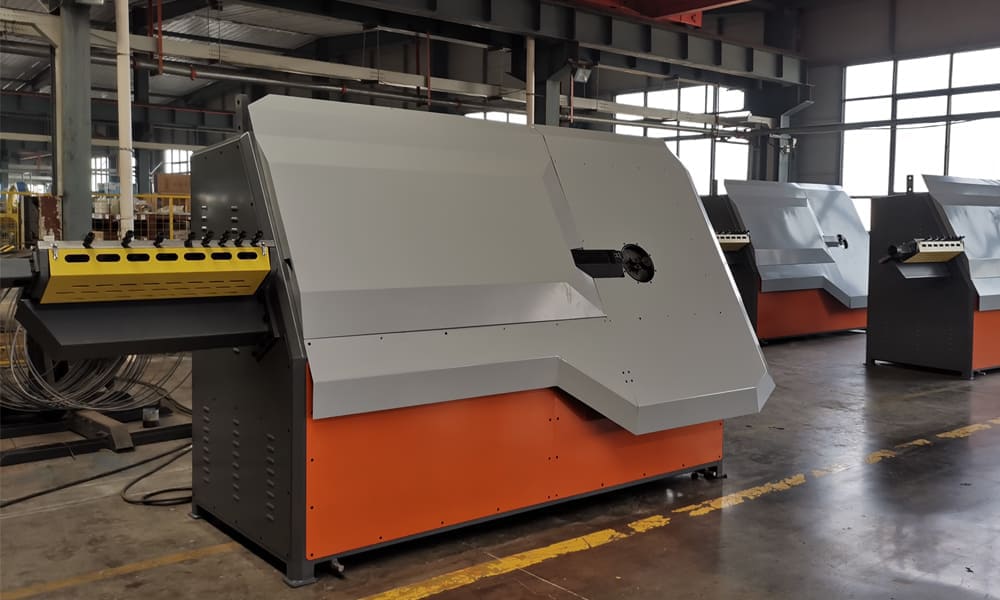Fully automatic CNC steel bar bending machine represents a significant advancement in the field of steel bar processing machinery. It improves upon traditional steel bar bending machines by integrating advanced features for enhanced precision and efficiency. This machine comprises two sets of horizontally and vertically adjustable straightening wheels, combined with four traction wheels driven by imported servo motors. These components ensure optimal straightening precision of steel bars.
Introduction to the Bending Machine
The development of the automatic steel bar bending machine mirrors the rapid growth of China’s industrial sector. As industry demands have risen, so too has the need for diverse and precisely shaped steel bars. The introduction of the steel bar bending machine effectively addresses these requirements by enabling the production of various steel bar shapes crucial for industrial applications, particularly in construction. This has prompted continuous innovation among technicians to design and refine steel bar bending machines, thereby enhancing production efficiency.
Main Structure
The machine is structured into mechanical and control components. The mechanical part includes the steel bar feeding mechanism, steel bar bending mechanism, and steel bar clamping mechanism. Meanwhile, the control system consists of a programmable controller, contact relays, and a switch power supply.
Working Principle
Upon powering on, the feed motor initiates rotation, guiding the steel bar through upper and lower guide wheels. The bending motor subsequently bends the steel bar forward upon reaching the designated position. A reverse rotation resets the workbench, while an electric steel bar cutter completes the bending task.
Main Device Design
- Steel Bar Feeding and Clamping Mechanism: This mechanism positions and clamps the steel bar using a screw nut mechanism and spring. The feed motor drives the lower guide wheel to advance the steel bar, facilitating the feeding process.
- Steel Bar Bending Mechanism: Controlled by a motor-driven turntable equipped with a stopper, this mechanism bends the steel bar effectively by blocking its movement during rotation.
Operation Procedures
- Ensure the mechanical components are in optimal condition, and both the workbench and bending machine table are level. Prepare necessary mandrels and tool stops.
- Install the appropriate mandrel, forming shaft, or variable baffle based on the steel bar diameter and bending requirements. Mandrel diameter should be 2.5 times the steel bar diameter.
- Inspect mandrels, baffles, and the turntable for damage or cracks. Securely fasten protective covers before operating the machine.
- During operation, insert the steel bar end into the turntable gap, securing the opposite end near the machine body. Verify machine stability before proceeding.
- Prohibit adjustments to mandrels, angle changes, or speed adjustments during operation. Refrain from adding or removing oil.
- Ensure steel bar specifications (diameter, quantity, speed) adhere to machine limits during bending. Adjust maximum limits for high-hardness or low-alloy steel bars as per machine specifications.
- Maintain a safe distance from the bending steel bar’s operational radius. Stack bent products neatly, ensuring hooks face downward.
- Stop and stabilize the turntable before changing its direction.
- After operation, clean the workspace, perform machinery maintenance, and securely lock the power box.
This comprehensive approach ensures safe, efficient operation of the automatic CNC steel bar bending machine, meeting the diverse demands of modern industrial applications.
